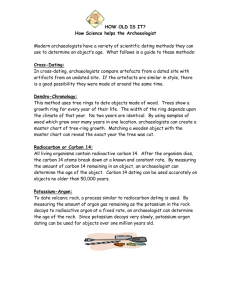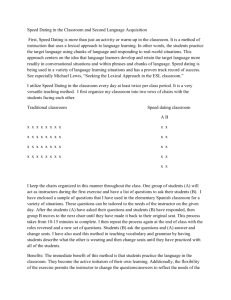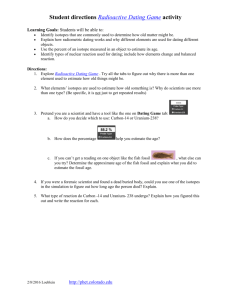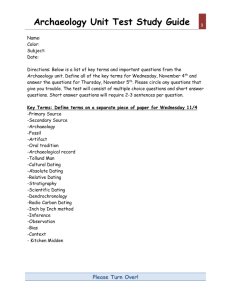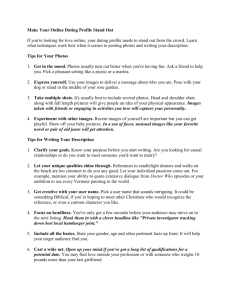Dating Techniques - bankstowntafehsc
advertisement
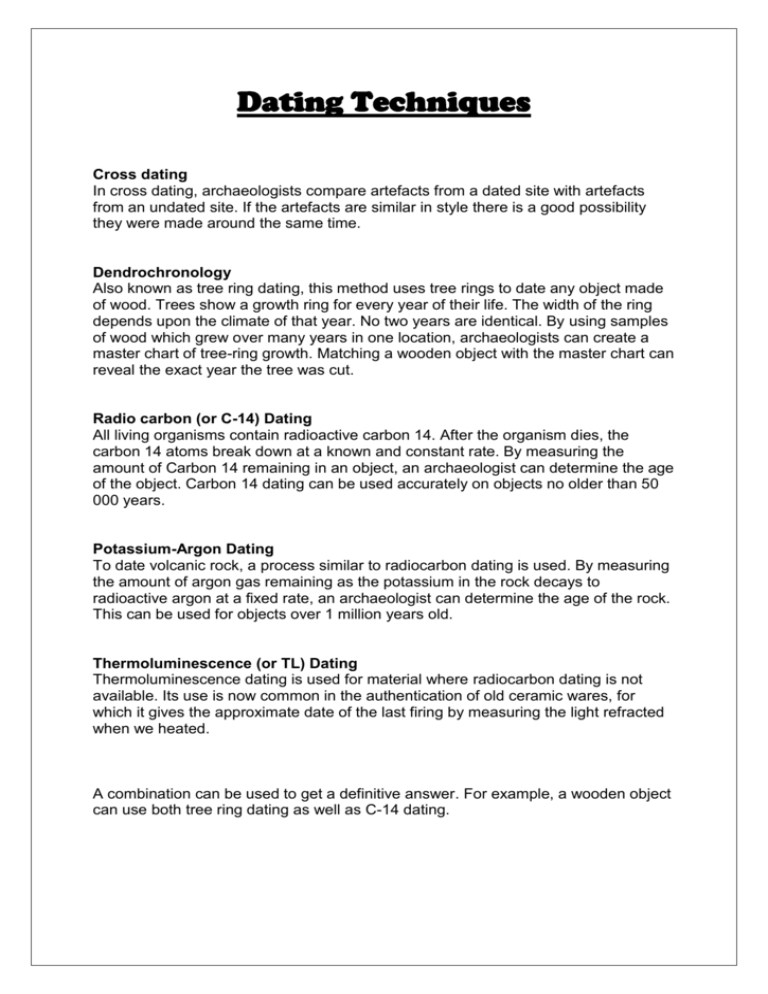
Dating Techniques Cross dating In cross dating, archaeologists compare artefacts from a dated site with artefacts from an undated site. If the artefacts are similar in style there is a good possibility they were made around the same time. Dendrochronology Also known as tree ring dating, this method uses tree rings to date any object made of wood. Trees show a growth ring for every year of their life. The width of the ring depends upon the climate of that year. No two years are identical. By using samples of wood which grew over many years in one location, archaeologists can create a master chart of tree-ring growth. Matching a wooden object with the master chart can reveal the exact year the tree was cut. Radio carbon (or C-14) Dating All living organisms contain radioactive carbon 14. After the organism dies, the carbon 14 atoms break down at a known and constant rate. By measuring the amount of Carbon 14 remaining in an object, an archaeologist can determine the age of the object. Carbon 14 dating can be used accurately on objects no older than 50 000 years. Potassium-Argon Dating To date volcanic rock, a process similar to radiocarbon dating is used. By measuring the amount of argon gas remaining as the potassium in the rock decays to radioactive argon at a fixed rate, an archaeologist can determine the age of the rock. This can be used for objects over 1 million years old. Thermoluminescence (or TL) Dating Thermoluminescence dating is used for material where radiocarbon dating is not available. Its use is now common in the authentication of old ceramic wares, for which it gives the approximate date of the last firing by measuring the light refracted when we heated. A combination can be used to get a definitive answer. For example, a wooden object can use both tree ring dating as well as C-14 dating.
